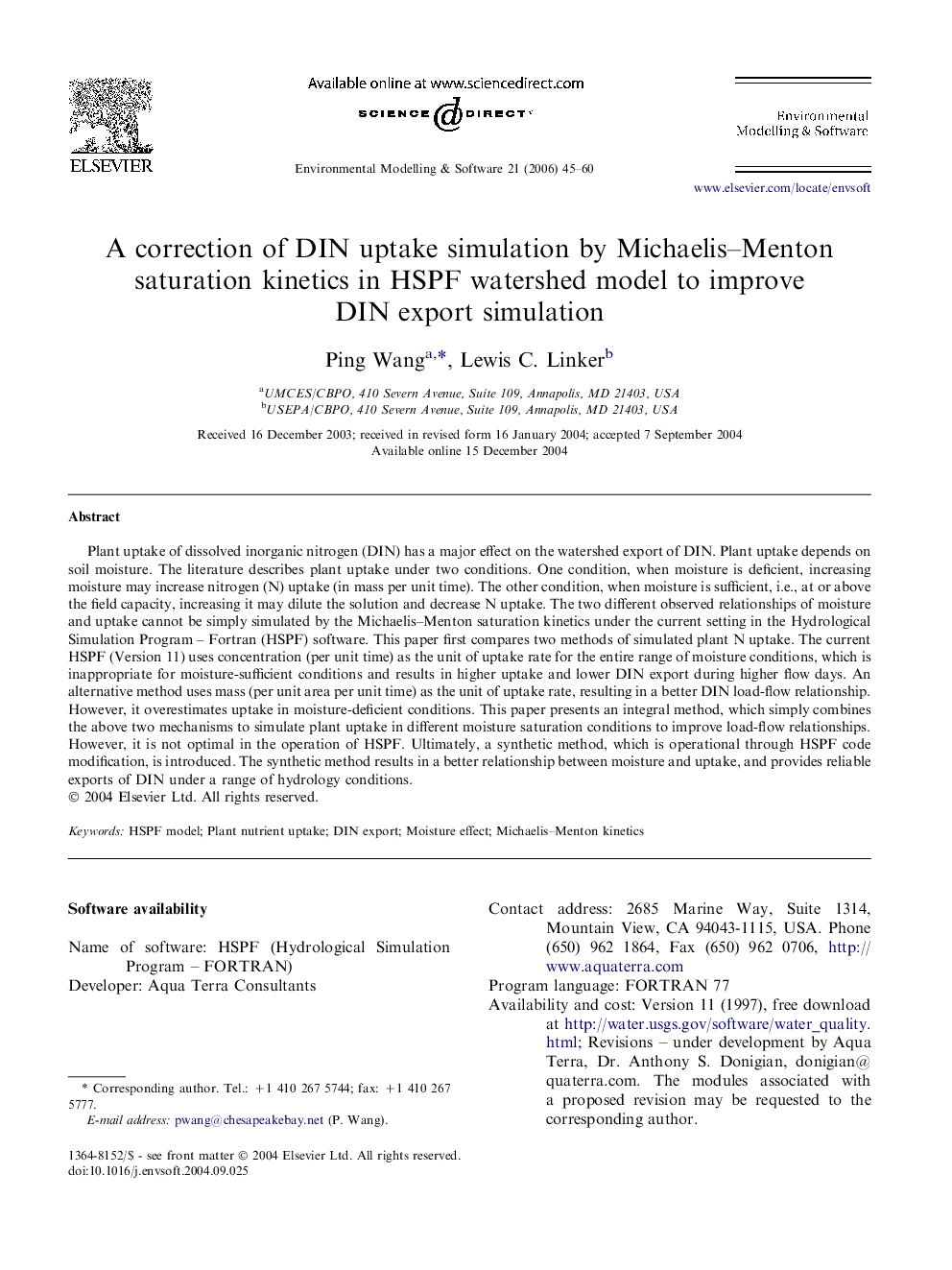| Article ID | Journal | Published Year | Pages | File Type |
|---|---|---|---|---|
| 568890 | Environmental Modelling & Software | 2006 | 16 Pages |
Plant uptake of dissolved inorganic nitrogen (DIN) has a major effect on the watershed export of DIN. Plant uptake depends on soil moisture. The literature describes plant uptake under two conditions. One condition, when moisture is deficient, increasing moisture may increase nitrogen (N) uptake (in mass per unit time). The other condition, when moisture is sufficient, i.e., at or above the field capacity, increasing it may dilute the solution and decrease N uptake. The two different observed relationships of moisture and uptake cannot be simply simulated by the Michaelis–Menton saturation kinetics under the current setting in the Hydrological Simulation Program – Fortran (HSPF) software. This paper first compares two methods of simulated plant N uptake. The current HSPF (Version 11) uses concentration (per unit time) as the unit of uptake rate for the entire range of moisture conditions, which is inappropriate for moisture-sufficient conditions and results in higher uptake and lower DIN export during higher flow days. An alternative method uses mass (per unit area per unit time) as the unit of uptake rate, resulting in a better DIN load-flow relationship. However, it overestimates uptake in moisture-deficient conditions. This paper presents an integral method, which simply combines the above two mechanisms to simulate plant uptake in different moisture saturation conditions to improve load-flow relationships. However, it is not optimal in the operation of HSPF. Ultimately, a synthetic method, which is operational through HSPF code modification, is introduced. The synthetic method results in a better relationship between moisture and uptake, and provides reliable exports of DIN under a range of hydrology conditions.
